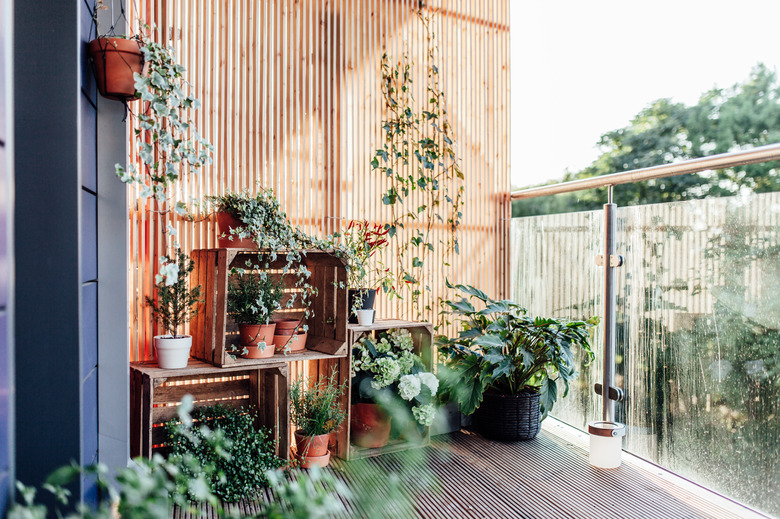How Different Sizes Of Pots Affect Plant Growth
Why is container gardening so popular? It gives everyone the freedom to grow vegetables and flowers in places that aren't traditionally ideal for growing. People who rent a home, live in a high-rise apartment or just don't want to tear up their yards can enjoy gardening. One important part of container gardening is choosing the right size of pots. The effect of container size on plant growth can be significant, whether you choose a pot that's too big or too small.
Pots That Are Too Small
Pots That Are Too Small
The soil serves as the main source of nutrients for any plant. With less soil in a smaller pot, there are fewer nutrients available for the plant's root system. A pot that is too small can constrict the plant's roots, especially plants with big roots. The roots can get packed in without having enough room to spread out. If this happens, the plant's growth may slow down. You might also have issues with the plant tipping over because of the extra weight in comparison to the pot. And the plant may just look out of proportion.
One way to know if your plant needs a bigger pot is to look for roots poking out of the drainage holes in the bottom. A pot that is too small also won't hold enough water to support the plant. And the soil dries out quickly. You might notice that the plant shows signs of drought sooner if the container is too small.
Pots That Are Too Large
Pots That Are Too Large
It may seem like going with an oversized pot is better so you can avoid the crowded root situation. But a pot that's too big for your plant can also have negative effects on its growth. A pot that is too large for a plant can hold too much water in the soil or take too long to dry out, which can lead to mold growth, rot and root diseases. Too large of a plant pot also can make it difficult to keep the soil firmly packed around the plant's roots. And, just like a pot that's too small, a large pot can make your plant look out of proportion to its container.
Proper Pot Size
Proper Pot Size
So what is the ideal size for a pot? The best pot for each plant depends on the type of plant, the size of the plant and its needs. A pot should allow the plant's root system to spread out somewhat and drain well. This means that the pot should not be soaked after it is watered because the water should drain out the bottom. If your plant is currently in a pot that's too small, move it to a container that's about 2 to 4 inches larger in diameter. Opt for the higher end of the range if the plant tends to grow quickly.
The pot that a plant comes home in from a nursery typically is not appropriately sized. For example, the tomato container size for the plant you buy at the nursery is usually much smaller than the plant actually needs, so don't use that pot as a guide for choosing a new container for your plants. This pot is not meant for the long-term use but only to support the plant until it is either planted in the ground or repotted into an appropriately sized pot.
Different Sizes of Flower Pots
Different Sizes of Flower Pots
Containers for plants come in different sizes, shapes and depths. Five-gallon flower pot dimensions can vary depending on the design of a pot, for example, even though they hold the same amount of soil. Depth is sometimes more important than width. A wide, shallow container may not give the roots enough space to grow. If flowers such as pansies (Viola x wittrockiana, USDA zones 6-10) are planted in window boxes, they should be at least 9 inches in depth, for example. Most large vegetable plants, like tomatoes (Lycopersicon esculentum, zones 10-11) and annual beans (Phaseolus vulgaris), need at least a 5-gallon pot. If an herb garden or several different flowers are placed in one pot, it should be at least 18 inches in diameter.
Comparing not only different sizes of flower pots but also the dimensions and other characteristics can help you choose the right one for your plants. Giving your flowers or veggies just the right amount of space keeps them growing well.
